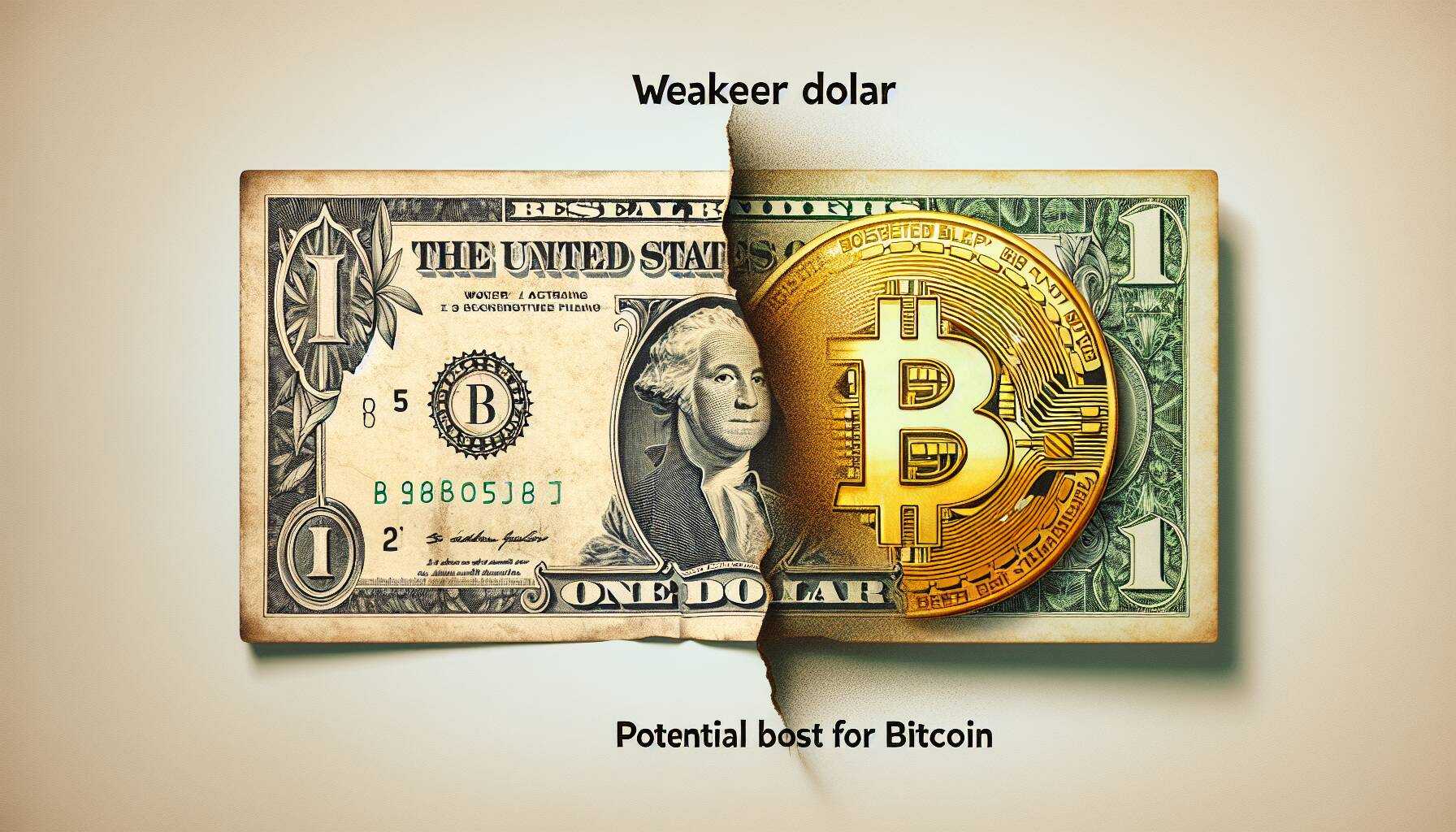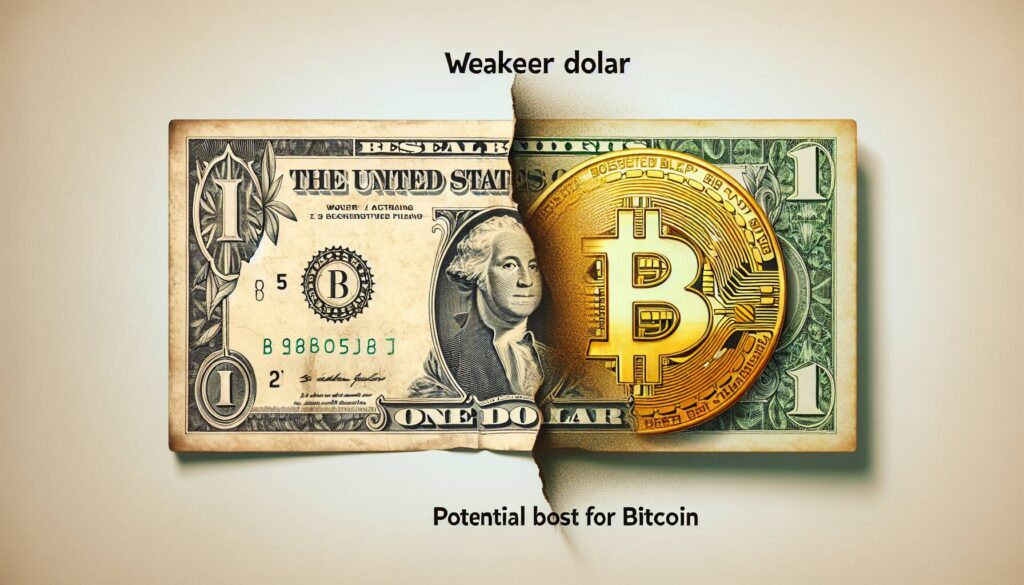In a recent report, the cryptocurrency asset manager Bitwise has highlighted the potential impact of President Trump’s administration’s push for a weaker U.S. dollar on the future of bitcoin (BTC). According to Matt Hougan, Bitwise’s chief investment officer, this strategy could be significantly bullish for the leading cryptocurrency. The report, released on Tuesday, asserts that the negative correlation between bitcoin and the U.S. Dollar Index (DXY) has persisted, suggesting that as the dollar weakens, bitcoin may stand to gain.
This perspective comes on the heels of a week marked by market turbulence, which culminated in a surge of cryptocurrencies, particularly bitcoin, following Trump’s announcement of a 90-day tariff pause on countries that haven’t engaged in retaliatory measures against the U.S. Such developments have led some analysts to speculate on the broader implications of a declining dollar.
“A shake-up in the global macro system creates an opportunity for new reserve assets to emerge,” Hougan noted in the report, indicating that assets like bitcoin and gold may become more important if the global economy transitions away from the dollar as the sole reserve currency.
Bitwise remains optimistic about the potential for bitcoin’s value, maintaining a bold price target of $200,000 for the year-end, despite the cryptocurrency trading around $82,300 at the time of their publication. This outlook hints at a potential shift where hard assets, notably bitcoin, could play a larger role on the global economic stage, illuminating a fascinating intersection between digital currency and macroeconomic policy.

The Impact of a Weaker Dollar on Bitcoin
Key points from the report by Bitwise illustrate the relationship between the U.S. dollar and Bitcoin, along with potential implications for investors.
- Trump Administration’s Intent: The Trump administration is aiming for a significantly weaker dollar as part of its tariff strategy.
- Market Reaction: Following a 90-day pause on tariffs, cryptocurrencies experienced a surge, signaling market optimism.
- Correlation with Bitcoin:
- Over the past five years, Bitcoin has shown a negative correlation to the U.S. Dollar Index (DXY).
- As the dollar decreases in value, Bitcoin tends to increase, which Bitwise anticipates will continue in the short term.
- Long-Term Implications:
- A weaker dollar could lead to a shift in the global macroeconomic system, allowing new reserve assets like Bitcoin and gold to gain prominence.
- This transformation could diminish the U.S. dollar’s role as the dominant reserve currency, fostering greater acceptance of alternative assets.
- Price Expectations: Bitwise maintains a bullish outlook, projecting a year-end Bitcoin price target of $200,000, significantly higher than its current trading value of $82,300.
“A shake-up in the global macro system creates an opportunity for new reserve assets to emerge.” – Matt Hougan, Chief Investment Officer at Bitwise
Understanding the Cryptocurrency Landscape: The Impact of a Weaker Dollar on Bitcoin
The recent insights shared by asset manager Bitwise regarding President Trump’s influence on the U.S. dollar and its potential bullish effects on bitcoin (BTC) certainly adds a fascinating layer to the ongoing conversation about cryptocurrencies. With speculation about a desire for a weaker dollar, it’s crucial to compare this scenario with other developments in the cryptocurrency sector, especially considering its implications on investments and market dynamics.
One of the competitive advantages highlighted by this move is the opportunity for bitcoin to rise in value when the dollar declines. As noted by Bitwise, there is a historical trend that indicates an inverse relationship between the dollar’s strength and bitcoin’s performance. This means that for individuals or institutions looking for a hedge against inflation or currency fluctuations, bitcoin may now present itself as a more appealing asset. Companies and investors focused on digital currencies might find themselves on the offensive during periods of economic uncertainty, capitalizing on potential price surges.
However, alongside these advantages come certain disadvantages and risks. While a weaker dollar could encourage bitcoin investment, it also raises questions about the stability of the overall market. For example, if global investors start moving away from the U.S. dollar as the primary reserve currency, this could lead to increased volatility in both cryptocurrency and traditional markets, deterring risk-averse investors. Additionally, there are concerns regarding regulatory scrutiny that often accompanies a surge in cryptocurrency prices, which could create complications for those navigating this emerging financial landscape.
This evolving macroeconomic environment is particularly beneficial for tech-savvy traders and forward-thinking investors who can adapt quickly to market changes. On the flip side, retirees or conservative investors might find themselves bereft of options, navigating a landscape that feels increasingly fragmented and risky. Moreover, institutions that have been slow to embrace bitcoin could face significant hurdles as the market evolves, potentially leaving them behind as agile players capitalize on new opportunities.
Ultimately, as the conversation around the weakened dollar and bitcoin unfolds, it reinforces the notion that cryptocurrencies are playing an increasingly vital role in global finance. Stakeholders across various sectors must remain vigilant, understanding that while opportunities abound, so do challenges, requiring a nuanced approach to investment strategies in this dynamic financial ecosystem.

















